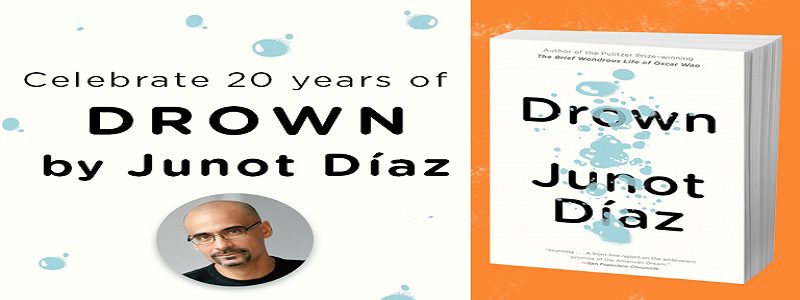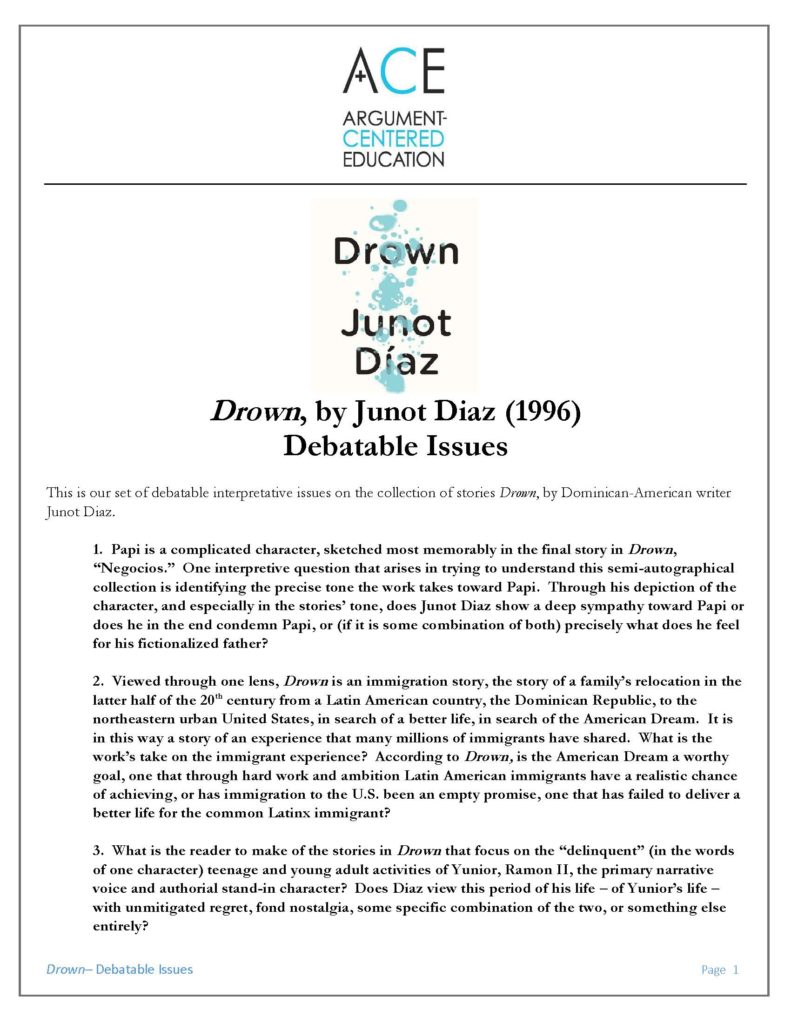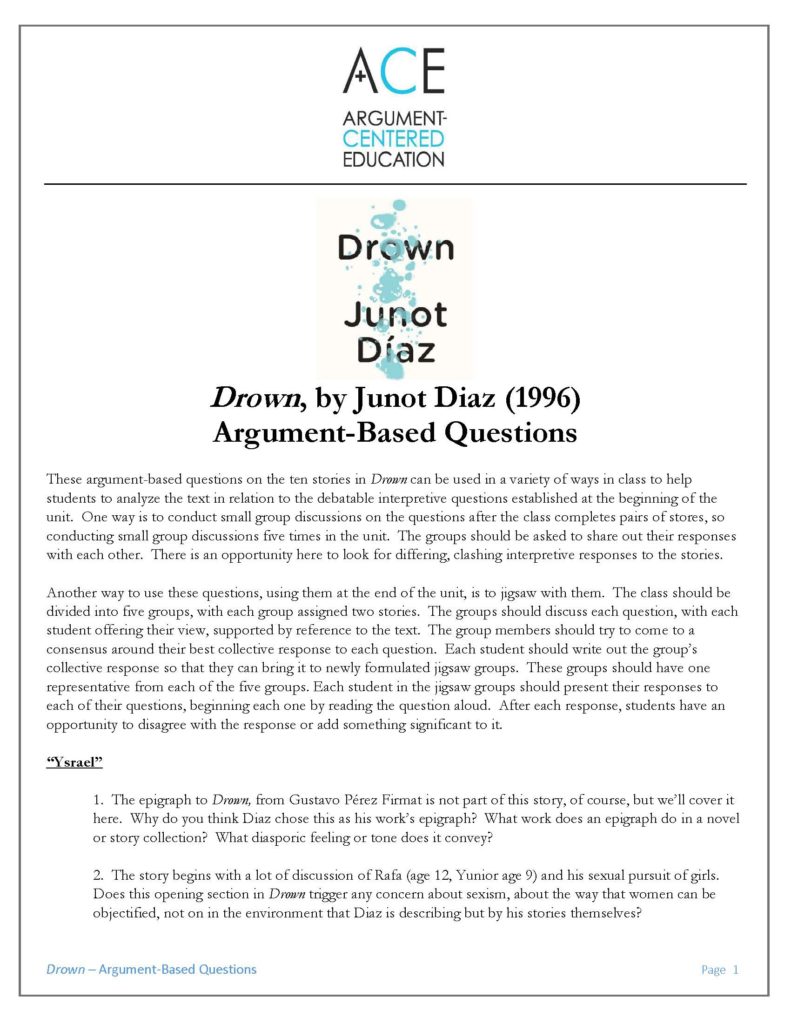
Analyzing Literature Closely through Argument — Junot Diaz’s ‘Drown’ (Part 1)
We have worked with partner schools on units teaching Sandra Cisneros’ The House on Mango Street, for many years probably the most frequently assigned works of Latinx fiction in high school. This year, though, we have been fortunate to work with a partner school with an especially robust Latino-American Literature course, and through that course we have collaborated on argumentalizing some very accomplished, very engaging literature written by Latinx writers. One such work is Pulitzer Prize and McArthur Fellowship winning author Junot Diaz’s first collection of stories, Drown (1996).
We began argumentalizing the Drown unit by conceiving and formulating debatable issues. We began with a brainstorming session in which we conceived nine distinct questions. We then thought through how the questions could be combined, refined, honed, and prioritized. We came through the process with four debatable issues that would guide instruction of Drown and organize activities and assessments throughout the unit.

Though we used all four of these issues throughout, we elevated one over the others.
Viewed through one lens, Drown is an immigration story, the story of a family’s relocation in the latter half of the 20th century from a Latin American country, the Dominican Republic, to the northeastern urban United States, in search of a better life, in search of the American Dream. It is in this way a story of an experience that many millions of immigrants have shared. What is the work’s take on the immigrant experience? According to Drown, is the American Dream a worthy goal, one that through hard work and ambition Latin American immigrants have a realistic chance of achieving, or has immigration to the U.S. been an empty promise, one that has failed to deliver a better life for the common Latinx immigrant?
One way that this debatable issue about the American Dream was brought into the center of the unit was that students were told that the summative assessment would be an interpretive essay on this question.
Teaching content through argument can mean, in a literature unit, having students consider, think through, discuss, and write about analytical questions about chunked segments of the work — in this case, individual short stories in the collection — that are aligned with the debatable issues. We worked on a set of these argument-based questions for Drown, which we used after students read two or three stories at a time.

These argument-based questions on the ten stories in Drown can be used in a variety of ways in class to help students to analyze the text in relation to the debatable interpretive questions. One way is to conduct small group discussions on the questions after the class completes pairs of stores, so conducting small group discussions five times in the unit. The groups should be asked to share out their responses with each other. There is an opportunity here to look for differing, clashing interpretive responses to the stories.
Another way to use these questions — one that we used in this year’s implementation of this unit with a partner high school — is using them at the end of the unit, in jigsaw method. In this jigsaw activity, the class should be divided into five groups, with each group assigned two stories. The groups should discuss each question, with each student offering their view, supported by reference to the text. The group members should try to come to a consensus around their best collective response to each question. Each student should write out the group’s collective response so that they can bring it to newly formulated jigsaw groups. These groups should have one representative from each of the five groups. Each student in the jigsaw groups should present their responses to each of their questions, beginning each one by reading the question aloud. After each response, students have an opportunity to disagree with the response or add something significant to it.

